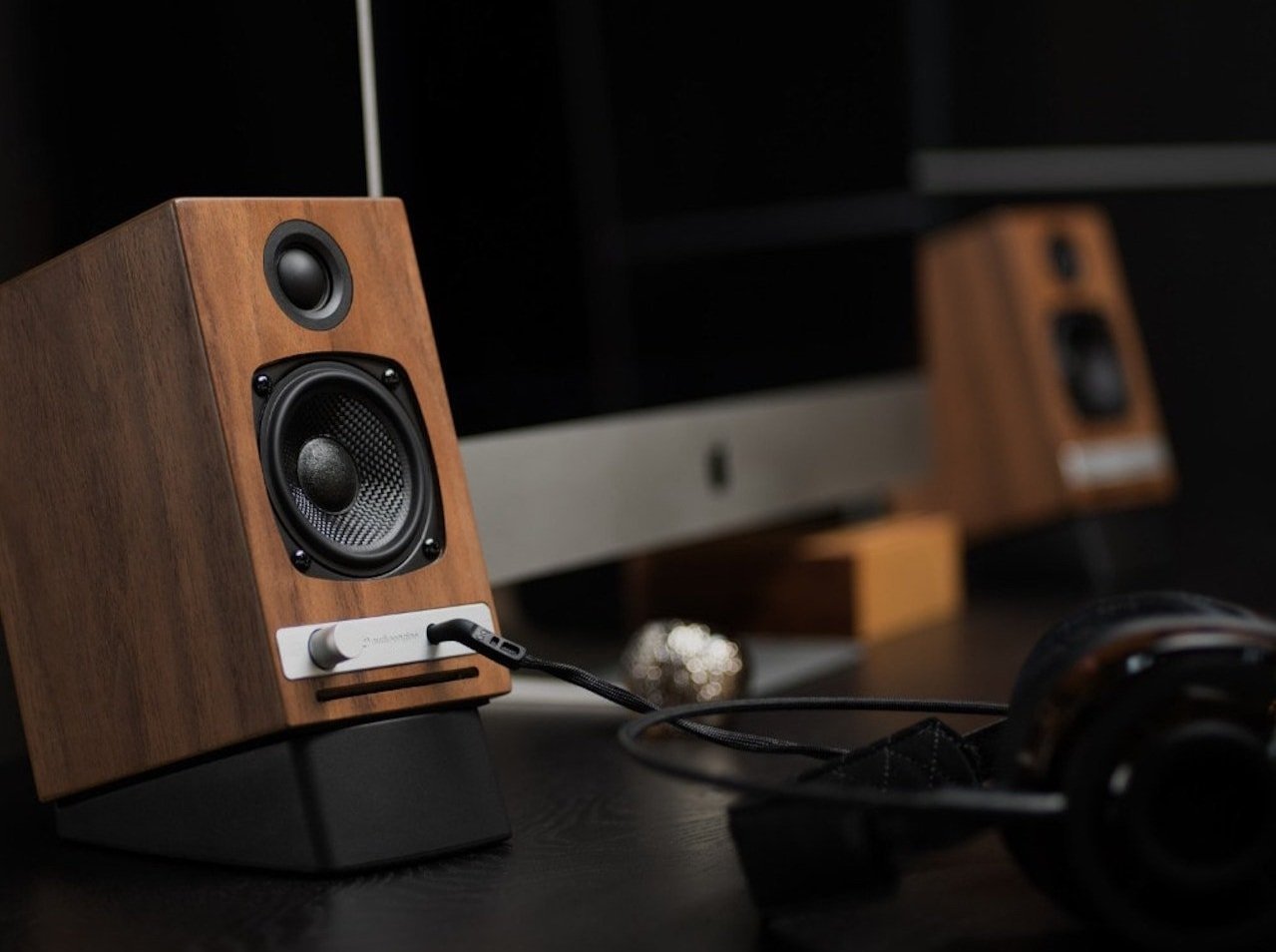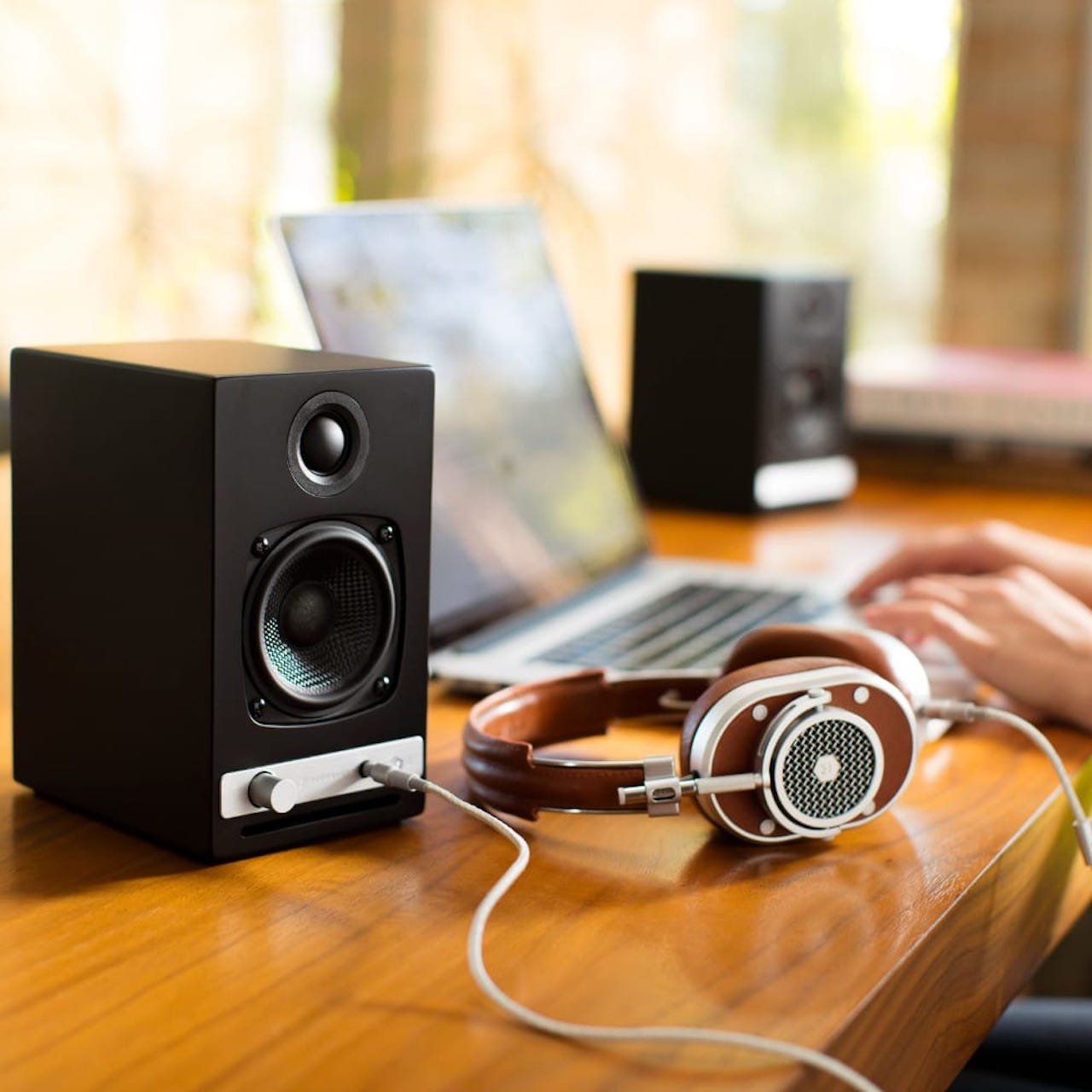Audioengine HD3 Wireless Speaker
Audio Engine HD3
This review of the Audioengine HD3 wireless speakers is a bit of a revisit for me. Five or so years back, I was living in Europe, and the apartment had a set in the living room. I must say I was surprised that they hadn’t been renewed or replaced at that time by the company. At the time, they were considered solid performers for a set of active powered speakers. However, since then, many other companies have entered the market, or existing companies have updated existing lines. Now in 2022, im wondering how they stack up against the competition.
The Concept
The Audioengine HD3 is a powered wireless speaker meaning you have everything you need to listen to music out of the box. There is no need to buy a separate receiver, amplifier, or cable it’s a simple, all-in-one, plug-and-play solution.
Active speakers have generally been overlooked in the audiophile community, and rightly so. Many companies thought it would be ok to just cram low-quality amplification into their active speakers. The result was usually poor performance compared to what you would get if you bought speakers and an amp separately.
I admit I wasn’t really a fan of such solutions, but in recent years many companies like Q-Acoustics and especially Edifier have set the bar very high.
The HD3 is more targeted towards a desktop system as opposed to a Hifi solution, so it has its use case.
Specification
Power Output: 60 W peak power total (15 W RMS / 30 W peak per channel), AES
Drivers: 2.75” woofers & 0.75“ dome tweeter
Inputs: 3.5 mm stereo mini-jack, RCA L/R, USB, Bluetooth
Outputs: RCA variable line-out, 3.5 mm mini-jack headphone out
Input Voltages: 110-240 V 50/60 Hz auto-switching
SNR: >95 dB (typical A-weighted)
Input Impedance: 5K ohms unbalanced
Build and Aesthetic Impressions
Audioengine HD3 Desktop Speakers
The Audio Engine HD3 is a small set of speakers but larger than typical desktop computer monitors. They take up a little more space than we are used to in this category, but that is kind of form following function to fit a set of full-size 2.5” drivers inside.
Effectively they look like a shrunken-down set of bookshelf speakers but with a few tweaks that make them more useable in a desktops situation. Firstly, a 3.5mm input port is included on the front. This is useful as you don’t have to mess around at the back of the speaker in an area that will already be pressed for space. The second is a volume pot that allows for fine control of the volume, it’s nice having this so close at hand when working.
With the grills on, they look fairly unspectacular but removing the grills shows some nice touches have been added to the aesthetic design. I like the way the woofer looks with its carbonesque weave and the support structure it is based in.
The HD3 is available in 3 colors. White, Black, and Walnut (Wood finish).
Two element I did not like was the asymmetrical nature of having the controls on one side. Also, the Bluetooth antenna is actually external, which kind of shows its age. Many more modern speakers now have the antenna internally mounted for a cleaner look.
Build quality is excellent, good materials were used in the construction, and my review unit was holding up really well even though I believe it is around w years old.
Connectivity
One of the big advantages of this speaker type is that you have lots of options to connect to them. As I mentioned above, Bluetooth is present and is in the 5.0 form, which means it benefits from reduced latency time, making it better for gaming but also supports hi-res codecs like APTX.
If you prefer to connect your source device directly, I’m happy to say there are plenty of options. RCA line-in USB and 3.5mm Aux ports are all provided.
The absence of coaxial and fiber inputs is to be accepted and not really missed as the speaker is not of the quality to justify inclusion.
Sound
The sound is bloody brilliant. For a desktop monitor-style speaker, of course. The driver size is, of course, going to be a limiting factor in terms of sound, I think that is a given, but man, this gets loud, displays very low distortion, and is likely the best in its class I have heard to date.
As said, the size is the limiting factor, but it seems Audioengine knew that from the get-go and instead focussed on driver quality. That midrange woofer is tight fas and composed. When listening at close proximity, the detail is very good and clarity again class leading.
Really the sound is going to be dependent on what you listen to. For music, it’s capable of the volume pushing up to 90% without significant degradation; at that 90%, it is already loud enough to fill a small room completely. It is also well-suited for gaming or watching videos on the internet.
If we get into breaking down the sound (which is overkill), the speaker sounds very balanced. No one frequency is taking dominance of the others. Audioengine wisely refrained from trying to push the bass levels too far in the direction that it would distort. By keeping the low range gain in line, the driver can display some solid function for mid-bass presence with it being tight, punchy, and articulate.
Tonally it’s a natural sound. Not dry or analytical and definitely not warm and lush. It just sounds very real. You can hear this naturality by playing any type of acoustic guitar, it’s a good instrument to judge for natural tonality because most people are familiar with it. In here, strings reverberate and deteriorate well, although maybe a touch too quickly, which may be a drawback of the cabinet size.
The tweeters are free to handle the highs and do so in an ok manner. I think there may be a dearth of quality between the two drivers because where the mids and lows impressed in quality, the tweeter only felt fine. Highs were smooth and non-fatiguing but lacked the top-end sparkle treble heads, as I appreciate.
The bass I touched on above, and yes, the quality is excellent but don’t expect any 2.5-inch driver to be able to portray sub bass accurately. Sub bass is very lacking here, but if that’s what you're looking for, it’s probably not a fault of the HD3 but in your choice of speaker style. If you want more bass, get some of our recommended bookshelf speakers.
Final Verdict
I was curious to how the Audioengine HD3 would perform as it’s one of the longest-running active speaker lines I have tested. The good news is that quality just lasts. When they were released, the Audioengine HD3 was one of the best desktops speakers you could get. In terms of finish, build quality, and sound. However, if you are someone that really needs deep thumping bass or is trying to fill larger rooms, it’s time you upgraded to a bigger speaker.
Official Website of the Audioengine HD3: www.audioengine.com







